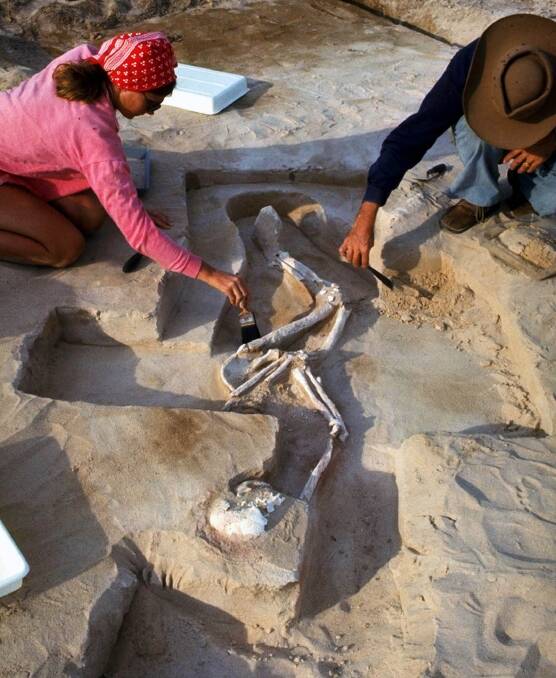The ancient remains of Mungo Man will be moved to National Museum of Australia before elders from the Willandra Lakes region will discuss his possible repatriation to the saltbush shores where he lived and died.
Subscribe now for unlimited access.
$0/
(min cost $0)
or signup to continue reading
His 40,000-year-old skeleton will be transferred from the Australian National University to the museum's Repatriation Unit in Canberra, a National Museum of Australia spokesperson confirmed.

The museum will hold the remains at the request of the Mutthi Mutthi, Ngiyampaa and Paakantji/Barkindji people while his final resting place is determined.
His discovery in an arid lake bed by Professor Jim Bowler, in 1974, heralded a deeper understanding of the dispersal of modern humans across the planet.
But the intricate details of his burial also forced Western researchers to re-evaluate their perceptions of the complexities of Aboriginal culture, Professor Bowler said.
"The ... amount of cultural information, the amount of detail preserved in the ritual nature of the burial ... provided entirely new insights into the sophistication of the Aboriginal people," he said.
"The ochre anointing of the body, a ritual fireplace, established at 40,000 years ago these people had an incredible, complex connection to the land around them. Not only to the land, but also the stars and the sun. It's a connection ... to the cosmos and that's a connection that many of us today really need to emulate."
Last year, the Australian geologist penned an editorial which appeared to echo traditional land owners' calls to return Mungo Man to his land and people.
In another editorial published on Wednesday, he said the long-awaited return of Mungo Man was a challenge Prime Minister Malcolm Turnbull needed to address.
"[Because of Mungo man] the next generation of Australians will grow up with quite a different background of who those earliest Australians were, the debt we owe to the land and the debt we owe to those early people. [That's what] Mungo man epitomises," Professor Bowler said.
ANU Vice-Chancellor Professor Ian Young said the university had treated the remains with great care and respect for the four decades it had held them. He made a formal apology to the Mutthi Mutthi, Ngiyampaa and Paakantji/Barkandji people at a ceremony at the university.
"We recognise that the removal of these ancestral remains caused ongoing grief to your communities and we apologise unreservedly for this," Professor Young said.
"We hope that the return of these ancestors to you, the traditional owners, can in some way redress our past mistakes, and the mistreatment and distress that we have caused you.
"We sincerely hope that this will be the beginning of a healing process for your communities."
Mutthi Mutthi elder Aunty Mary Pappin said Mungo Man's return to country would be celebrated by Indigenous communities nationwide.
"It's been a long time coming for our people," she said.
"We are so grateful he is going to be coming home. He's done his job. It is time for him to go home and rest now."

